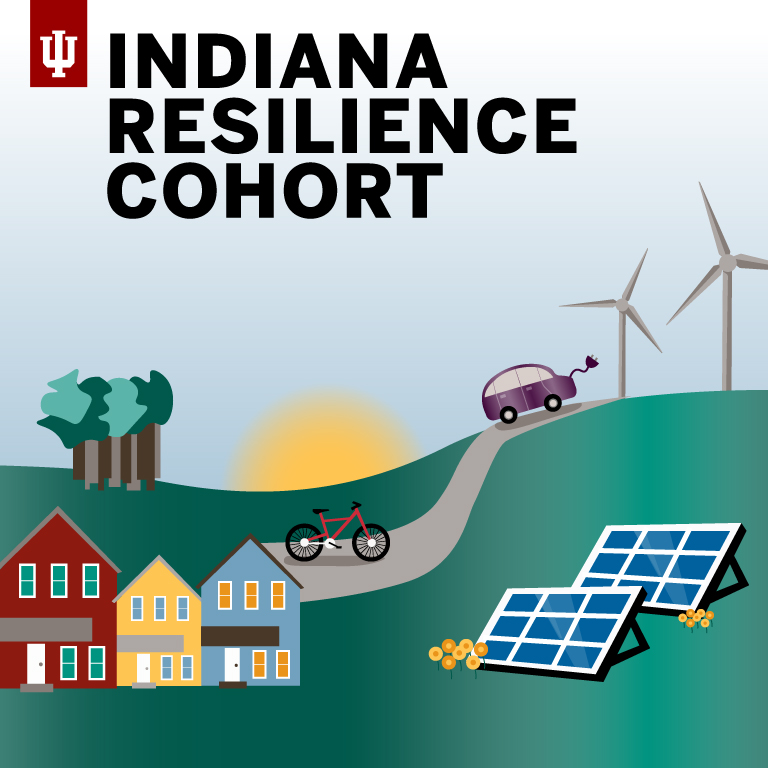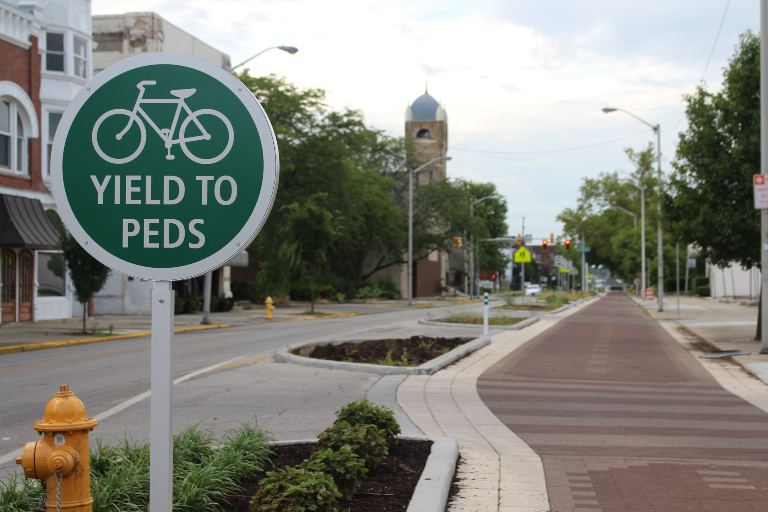Two Hoosier communities recently published their official road maps to address climate change, the culmination of a years-long process kickstarted by the Environmental Resilience Institute’s (ERI’s) Resilience Cohort program.
This summer, Richmond and Carmel became the latest Indiana municipalities to lay out a coordinated vision for how community leaders plan to reduce local greenhouse gas emissions and protect residents and businesses from climate change impacts, such as extreme heat and precipitation. Since 2019, both communities have been involved with ERI’s Resilience Cohort, which provides guidance and support for Indiana city, town, and county governments to measure and reduce local greenhouse gas emissions and implement climate resilience strategies.
The Carmel City Council unanimously approved its plan in August, and Richmond’s Common Council did the same in September. In Indiana, 17 Hoosier communities, representing about half of the state’s residents, have adopted or are in the process of creating a climate action plan.
“Climate change is a global problem, but more and more communities in Indiana and elsewhere are understanding that local solutions are critical to ensuring that their residents are positioned to thrive,” said ERI Resilience Implementation Manager Matt Flaherty. “The climate action plans recently adopted by Richmond and Carmel will give local leaders a solid foundation to guide decision making and tackle the long-term challenges posed by a warming planet. Congratulations to both communities for adopting these plans.”
Richmond’s plan is the result of months of public outreach and consultation with local government and community stakeholders. The plan outlines the risks and vulnerabilities climate change presents to the city as well as strategies to adapt to climate change impacts and reduce the emissions that worsen the crisis.
The document covers nearly 70 strategies, spanning energy, transportation, and wastewater management. Additionally, the plan includes recommendations to increase the resilience of buildings, adopt sustainable land use policies, and promote economic development.
“I see the climate action plan as a quality of life and livability plan for the city,” said City of Richmond GIS Coordinator Grayson Hart, who helped develop the plan. “Getting people involved is easier if they can see how many of the things that they care about related to living, working, and playing in this city are a key part of this comprehensive effort.”




